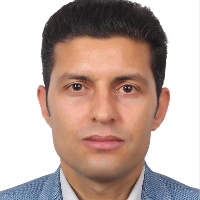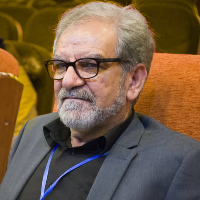Investigating and Modeling the Effect of the Composition and Arrangement of the Landscapes of Yazd City on the Land Surface Temperature Using Machine Learning and Landsat-8 and Sentinel-2 Data
The effect of urban thermal islands due to intersections with major environmental challenges of the 21st century is one of the most important studies on environmental phenomena, and in this regard, the study of the land surface temperature gives a clear perspective of the thermal islands in cities, which, according to the warm and dry climate of Yazd, examines the status and factors affecting the land surface temperature in this city seem to be necessary. This research, using the spectrally and spatially fused image of Landsat-8, for August 2020, and using machine learning algorithms, tries to model the changes in land surface temperature by calculating different parameters related to urban land perspective. Based on the results of this study, the spectral-spatial fusion of Landsat-8 with Sentinel-2 by Pan sharpening, increased 10.7% of the overall accuracy and 16.5% of the Kappa coefficient in the classification of this image. The study also showed that most neighboring parameters associated with land cover are ranked 1 to 11 of influencing the land surface temperature of Yazd city. In this area, the proximity to bare lands in the radius of 100, 50, and 150 meters ranked 1 to 3 of the most important parameters affecting the land surface temperature respectively. This study showed that the change in land cover arrangement could affect the land surface temperature and changing the bare lands to the built-up areas, up to 1.1°C, to vegetation, up to 2.1°C, and changing 30% of bare land to vegetation, up to 1.6°C can reduce the average land surface temperature in Yazd. Also, this study showed that two different models of vegetation simulation in Yazd city showed that the "land-sparing " model could reduce the average land surface temperature in Yazd by 1.3° and the "land-sharing" model by 1.4°C.
-
Quantifying the Zayandeh Rud River drying effects on land surface temperature and adjacent vegetation cover changes over the past 33 years using satellite images
, Negar Naghipur, Mehrangiz Rezaei, *
Journal of Climate Change Research, -
Evaluation of Urban Growth and Its Impact on Vegetation and Environmental Sustainability (Case study: Zahedan City)
Zahra Kalmishi, *, Rahman Zandi,
Geography and Sustainability of Environment, -
Investigation of the Thermal Anomaly Precursor in the 2017 Azgeleh Earthquake in Kermanshah, Iran
Mostafa Heidari, Ahmad Mazidi *,
Journal of Geography and Environmental Hazards, -
Investigating the Earthquake Cloud Precursor in the 2017 Azgeleh Earthquake in Kermanshah, Iran
Mostafa Heidari *, Ahmad Mazidi,
Journal of Geography and Environmental Hazards, -
Combination of Semi-Empirical Radar Remote Sensing Models for Soil Moisture Retrieval During the Plant Growing Season Based on Machine Learning
Amir Sedighi, Saeid Hamzeh *, , Abd Ali Naseri, Jamal Mohammadi Moalezade
Iran Water Resources Research, -
The influence of urban stractures, vegetation cover, and utilized data in urban impervious surface mapping from multi-source data
Ali Abdolkhani, Sara Attarchi *,
Geographical Urban Planning Research,




